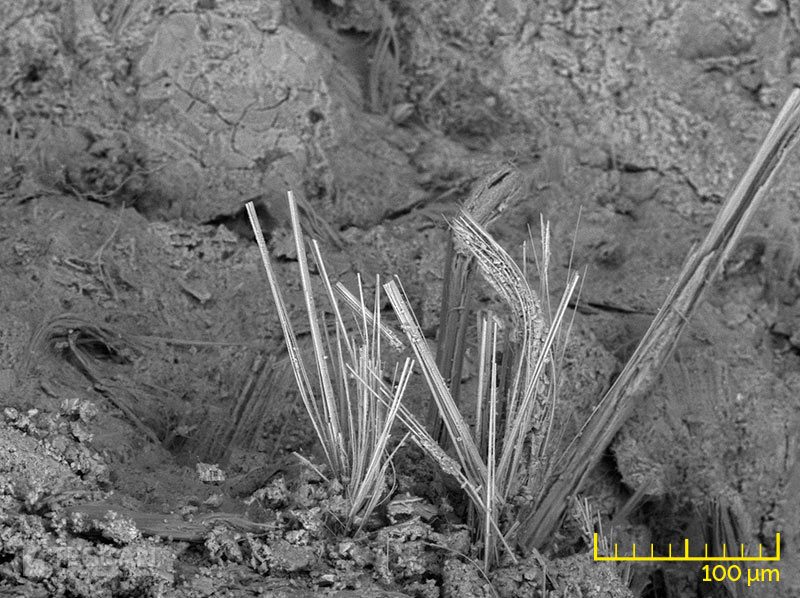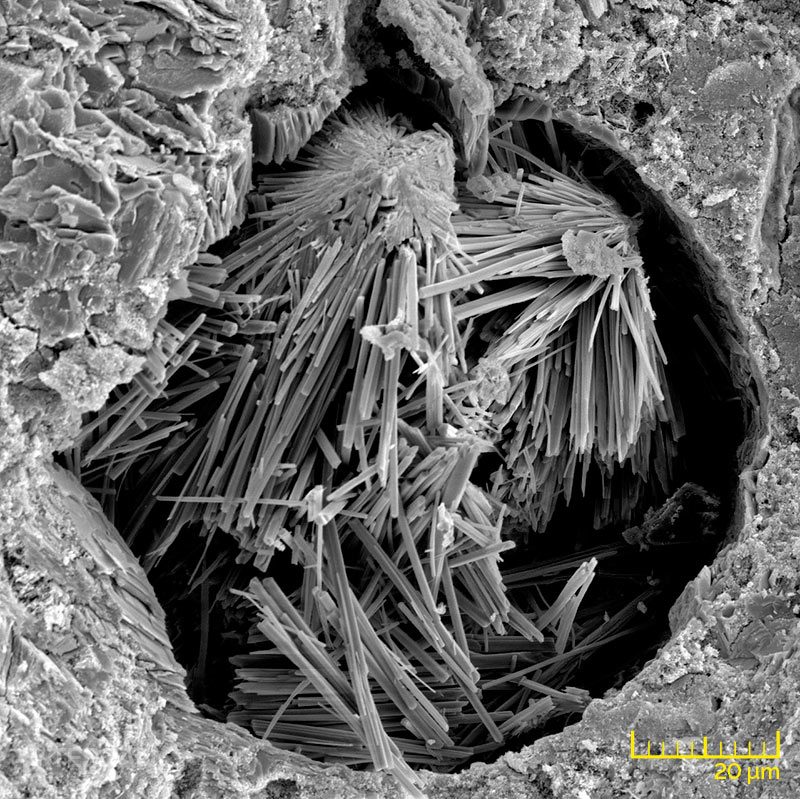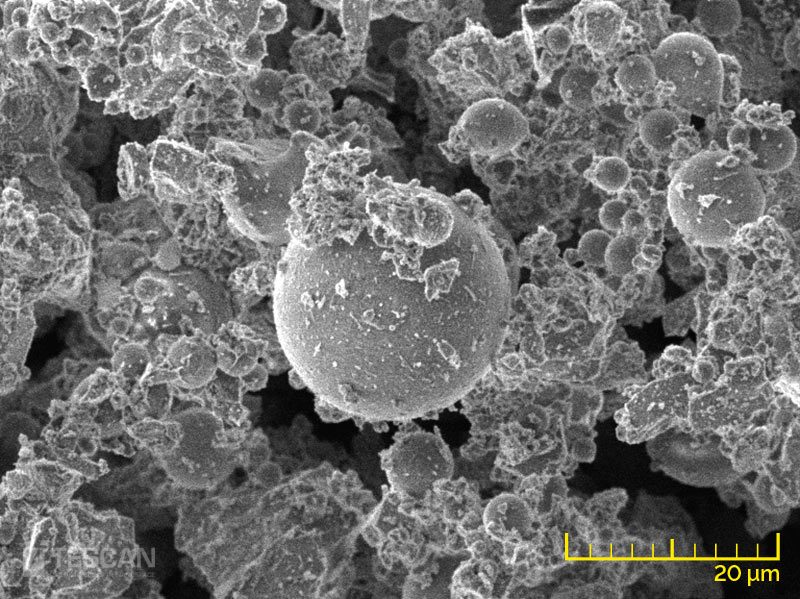SEM imaging can assist in identifying damage in building materials such as corrosion, structure failures and other damage caused by environmental conditions. Civil engineering is a discipline which deals with the design, construction and maintenance of physical and naturally built environments such as roads, bridges, canals, dams and buildings. The type of materials used in construction can be classified into two classes: natural materials (wood, clay, stone and sand) and manufactured materials such as concrete, bricks, plasterboards, mineral wool, metals, composites, plastics, etc.

Strucutre of cement
- SEM used in combination with BSE and EDX detectors help researchers identify details in the chemical composition of concrete mixes, sands and other granular materials.
- UniVac option with a Water Vapour Inlet can be used to observe crystallisation or melting processes in real time directly in the SEM chamber.
- Dual beam FIB-SEM system can reveal valuable information of the subsurface of materials as well as create 3D visualisations of such materials.
- The combination of 3D EDX and TOF-SIMS techniques facilitates a full compositional analysis of these types of materials.
- Asbestos
- Ettringit in concrete
- Fly ash




